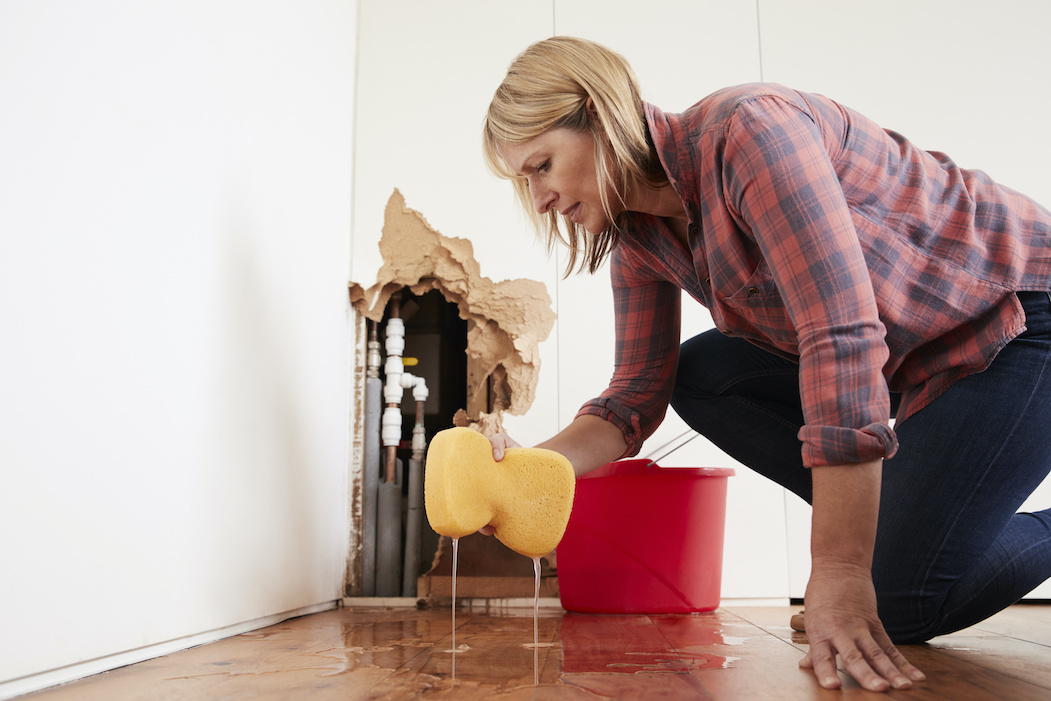Houston Winter Storm & Pipe Bursts
When Regency DRT arrived in Houston this morning the temperature dropped in Southeast Texas into near-historic levels, causing thousands of reported pipe bursts in Houston alone. Not only that but it left millions of homes and businesses without power creating a better environment for pipes to freeze.
With an average yearly snowfall of 63 inches and temperatures reaching -25 to -30 Fahrenheit, our Michigan location is no stranger to this type of damage.
Pipes break during wintry weather because the water freezes and expands inside the pipe, similar to putting a bottle of water or a can of soda in the freezer and watching it expand outward.
Often the pipes can’t take the stress, and they break. This could happen inside your home’s walls, in the attic, under your home or on the pipes outside your home.
Here are 6 telltale signs to look out for:
Frost or icicles – on the exterior of a pipe
Stains on your walls or ceiling – Look very carefully, perhaps with a bright flash light, for any discoloration from the normal paint. The beginning of a leak won’t always show up as falling sheet rock “” try to catch it in the very early stages of discoloration as it gets wet.
Sagging sheet rock – know that most of the time when dry wall gets wet, it has to be replaced, especially if is soaked and sagging or can easily be pierced with your finger or a tool. Fix the leak first, of course. Just repairing the leak without removing damaged dry wall or moisture could caused mold problems down the road.
Low water pressure or no water pressure – this could impact all your water fixtures or just one or two in a certain wall that froze. Of course, this is more difficult to tell if your city’s entire water supply is compromised or suffering from low water pressure.
Expensive water bills – if you haven’t changed your habits or had additional people staying over, a sudden jump in your monthly bill may be an indicator that you have a leak somewhere. It could even be from of a faucet or line outside or under your home where it may be less obvious. Again, walk around the perimeter of your property on a dry day and look for any clues like standing water or mud.
Smelly or Discolored Water – If you’re not sure what we mean by this please visit our “Know Your Water” article. This is extremely important in regards to safety.
What can I do to prevent further damage?
Act quickly – If the stress of water damage doesn’t motivate you to act quickly, the possibility of mold might. Mold can begin to develop within 24-48 hours of exposure to moisture. Say hello to airborne spores and harmful particles! Since mold has been linked to serious illness, be sure to act quickly whenever water damage is suspected.
Stop the flow of water – Assuming it’s safe to proceed, shut off the water supply leading to the damaged area. If you can’t tell where the water is coming from, get in touch with an expert immediately.
Turn off the power – For small cases of water damage, this step can be skipped. However, when water has saturated walls and floors, it’s better to be cautious. Don’t unplug or switch off electrical appliances when in contact with water. Some homeowners have fallen into the “It won’t happen to me” trap and gotten injured. Stay safe and smart.
Assess the damage – Before you or a professional water damage restoration company begins remediation, take stock of the damage. Write down exactly what looks damaged and the source of the damage. Use your phone to snap pictures of visible signs of the damage. This photographic evidence can help you in filing an insurance claim and can offer your restoration company more guidance on the source of the problem.
Salvage your most valuable possessions – Again, this step should only be done if the area is safe to enter. If you can, locate and remove your most important items from the damaged area. If your items are severely damaged, many restoration companies offer content restoration services. Content restoration is a process of individualized restoration to specific items and is ideal for homeowners with a wide variety of possessions that have been damaged. Contact our team for more information on this service.
Prepare the area – To prepare the affected area for full restoration, dry up visible water. Place old towels on the ground and sop up as much water as possible. Standing water is devastating to a home’s structural integrity and can compound water damage into more costly restoration projects.
Contact a professional – Unfortunately, many do-it-yourself restoration projects fall flat. With limited knowledge and equipment on the process of water damage restoration, homeowners usually only scratch the surface of remediation. Warped flooring returns and moldy smells become more apparent. Regency is no stranger to water damage. Whether you’ve experienced major flooding or just a subtle leak, contact Regency DRT for your restoration needs.
Is there anything I should avoid doing?
Regency does NOT recommend DIY mitigation and restoration – If you have water damage within your home, your first instinct may be to go on to Google and find the quickest, easiest and cheapest way to clean it up yourself. With the internet at our fingertips, it seems that we can find “answers” to our problems within seconds. Although we may find these “answers,” it doesn’t necessarily mean they are correct, that they even work, or are the best option for you. Click Here for more information.
If Your Home Or Business Was Effected By The Winter Storm, Call Now OR Fill Out The Form Below For Immediate Assistance – Our Water Damage Restoration Experts Are Standing By To Serve You – (888) 221-5791!
Contact Us
Call or submit our online form to request an estimate or for general questions about our services. We look forward to serving you!





